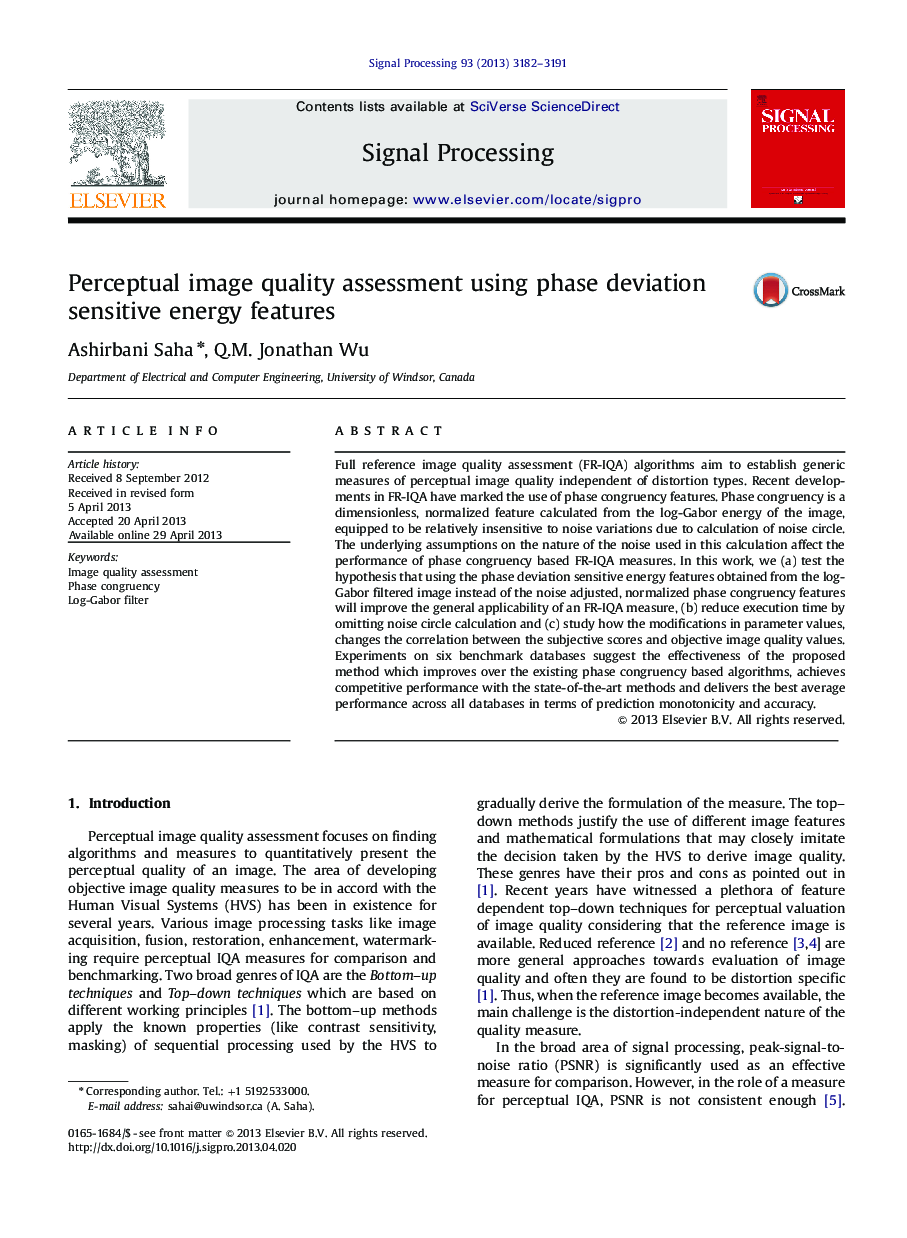| Article ID | Journal | Published Year | Pages | File Type |
|---|---|---|---|---|
| 563067 | Signal Processing | 2013 | 10 Pages |
Full reference image quality assessment (FR-IQA) algorithms aim to establish generic measures of perceptual image quality independent of distortion types. Recent developments in FR-IQA have marked the use of phase congruency features. Phase congruency is a dimensionless, normalized feature calculated from the log-Gabor energy of the image, equipped to be relatively insensitive to noise variations due to calculation of noise circle. The underlying assumptions on the nature of the noise used in this calculation affect the performance of phase congruency based FR-IQA measures. In this work, we (a) test the hypothesis that using the phase deviation sensitive energy features obtained from the log-Gabor filtered image instead of the noise adjusted, normalized phase congruency features will improve the general applicability of an FR-IQA measure, (b) reduce execution time by omitting noise circle calculation and (c) study how the modifications in parameter values, changes the correlation between the subjective scores and objective image quality values. Experiments on six benchmark databases suggest the effectiveness of the proposed method which improves over the existing phase congruency based algorithms, achieves competitive performance with the state-of-the-art methods and delivers the best average performance across all databases in terms of prediction monotonicity and accuracy.
•A new measure for FR-IQA using phase deviation sensitive energy features is proposed.•Noise adjustment of these features to form phase congruency has underlying assumptions.•Phase congruency based FR-IQA implicitly follows these assumptions reducing applicability.•Using only phase deviation sensitive energy features improves general applicability.•Proposed method achieves best average performance in six benchmark databases.
